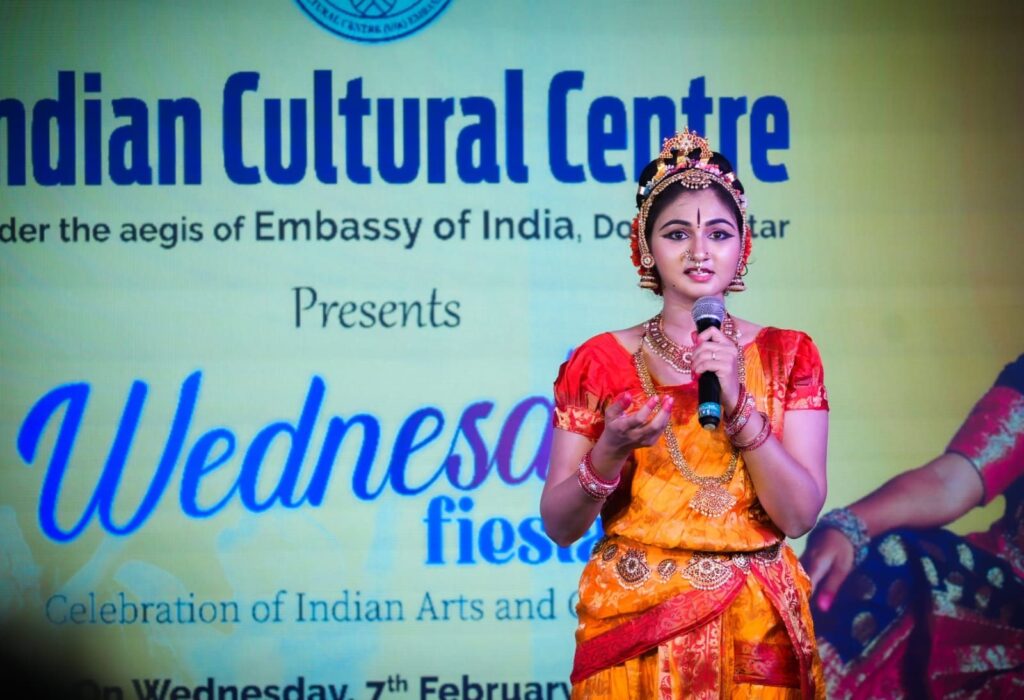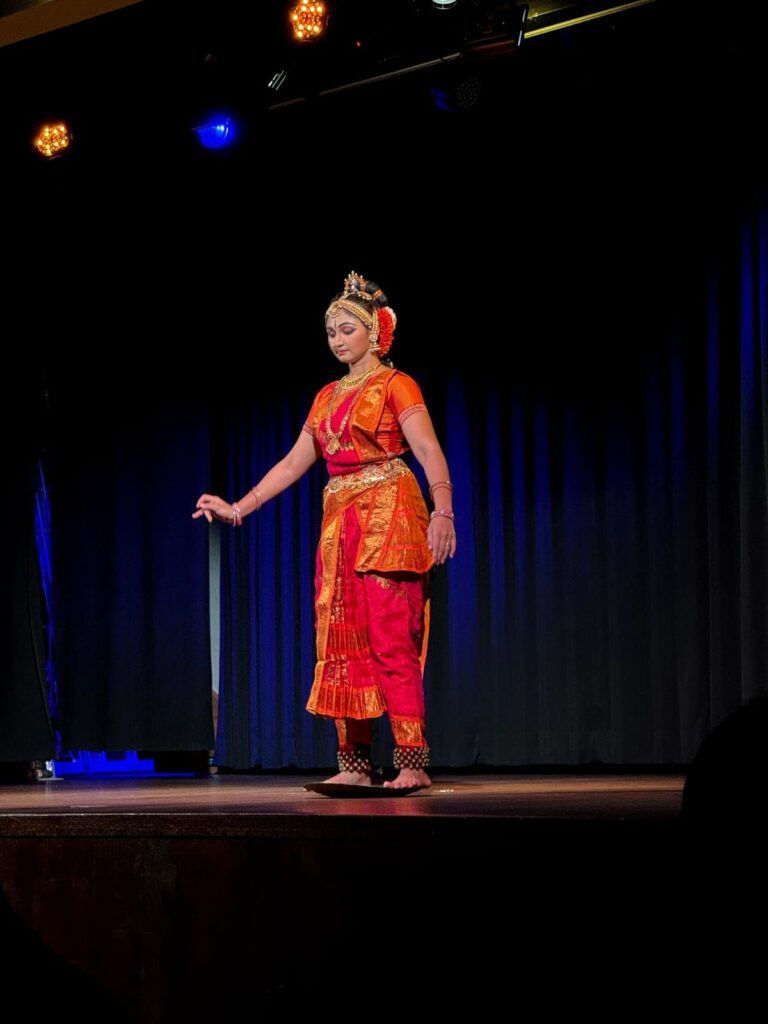Kuchipudi dancer Vyshnavi Korlakunta, in her month-long February foreign tour this year, successfully performed in Doha, Qatar; Oirschot and Den Haag, Netherlands; Hamm and Berlin, Germany; Gothenburg and Stockholm in Sweden; and Brussels, Belgium and wooed the rasikas. Speaking exclusively to Natyahasini, Vyshnavi Korlakunta, confides: “Every city, I’ve performed in has offered a unique and memorable experience. I cherish Qatar for its warm audiences, the Netherlands for their deep appreciation of the arts, and Germany for its vibrant international audience mix.” She states that Stockholm stands out for the curating and collaborations she enjoyed with friends, while Belgium impressed her with its enthusiastic audience. “Finland’s dedicated dance students and Norway’s newfound fascination with Kuchipudi have also been deeply moving. No matter where I perform, the joy of sharing my passion for dance is always a constant source of happiness,” says the youngster.

Presentation Style: Disclosing on whether there is a change in her presentation style for an international audience, Vyshnavi affirms it. “My presentation style does change when performing for an international audience, and it often depends on the context. For indoor performances with a closed group, I engage directly with the audience, encouraging interaction and dialogue. When introducing unfamiliar concepts, such as Puranic and Itihasic stories, I make sure not to overwhelm them with too much information,” she says.

The Hyderabad-based Kuchipudi dancer shares that she uses familiar language and draws comparisons to concepts they already understand. “At least one contemporary themes or story in the repertoire resonates well with international audiences. Additionally, a Question & Answer session after the performance fosters a deeper understanding and connection.” She further adds: “When performing for a children’s group, I incorporate stories with animals and nature motifs; for instance, “Manduka Shabdam” works wonderfully in this setting. Meanwhile, when presenting to an international student community, they are often interested in the history, iconography, and the science behind the art form, so I utilize visual tools to enhance their understanding and engagement,” the dancer mentions.
Competitive Community: Vyshnavi shares, “Performing in Hyderabad, and in India in general, feels like being part of a vibrant and competitive artistic community where you constantly strive to make your mark. It pushes you to improve every day, surrounded by so many talented artists.” The dancer says that in contrast, her international experiences have offered a broader perspective on the global dance scene, providing insight into Kuchipudi’s place among various dance forms. “Performing abroad challenges you to be creative in elevating the audience’s understanding of dance, and it also opens up opportunities for collaboration with artists from diverse cultures. In India, however, there’s a certain ease of access to resources and an informed audience, which elevates the performing experience,” she says.
Sharing her thoughts on whether dance academics were essential for a performance, Vyshnavi clears the air and says: “While academics may not be strictly necessary to become a performing artist, they provide a valuable foundation for a deeper, more holistic understanding of the art form. Academic knowledge helps explain why we do what we do, the evolution and the cross influences … Academics equip us with multiple lenses to analyse the dance form.”

She says her Master’s at the UofSA gave her a detailed understanding of the history, socio-politics, and cultural influences on Kuchipudi. “This background not only boosts my confidence in performances but also allows me to speak about my art with credibility and rationality, especially when engaging with new audiences. I aim to keep my performances and workshops interactive, and a strong academic grounding in dance is essential for meaningful and informed engagement.”
Interest In Dance: Going down memory lane, on how she developed interest in dance, the Hyderabad-based dancer, says: “My interest in dance wasn’t sparked by any single moment. It was more a confluence of natural inclination, exposure, and environment—perhaps a touch of serendipity as well. I have always been drawn to the performing arts, participating actively in school theatre productions and singing groups.” She says growing up, she was surrounded by a variety of artistic influences. “The Doordarshan and the Akashvani programs that I watched along with my grandmother undoubtedly piqued my curiosity and wonder. Moreover, living just opposite a town hall that hosted numerous performances by great artists further nurtured my fascination. All these experiences converged and deepened my love for dance. It wasn’t until I turned 13 that I finally had the opportunity to formally learn and immerse myself in the art of Kuchipudi,” she says.
Tips To Youngsters: On tips to youngsters, the Kuchipudi dancer says: “Improving dancing skill is a never-ending process, but it’s essential to parallelly develop a range of allied skills. Exposure to music, literature, history, culture, and other refined arts can greatly enrich your knowledge and depth as an artist.” She further adds that also, in today’s world, acquiring basic technical skills—such as proposal writing, content writing, graphic designing, video and sound editing, and understanding stage lighting—can make you more self-sufficient and empower you not just to seize opportunities, but to create them. “It’s also crucial to cultivate a high professional conduct and strong values from the very start of the career to make it sustainable,” Vyshnavi states.
